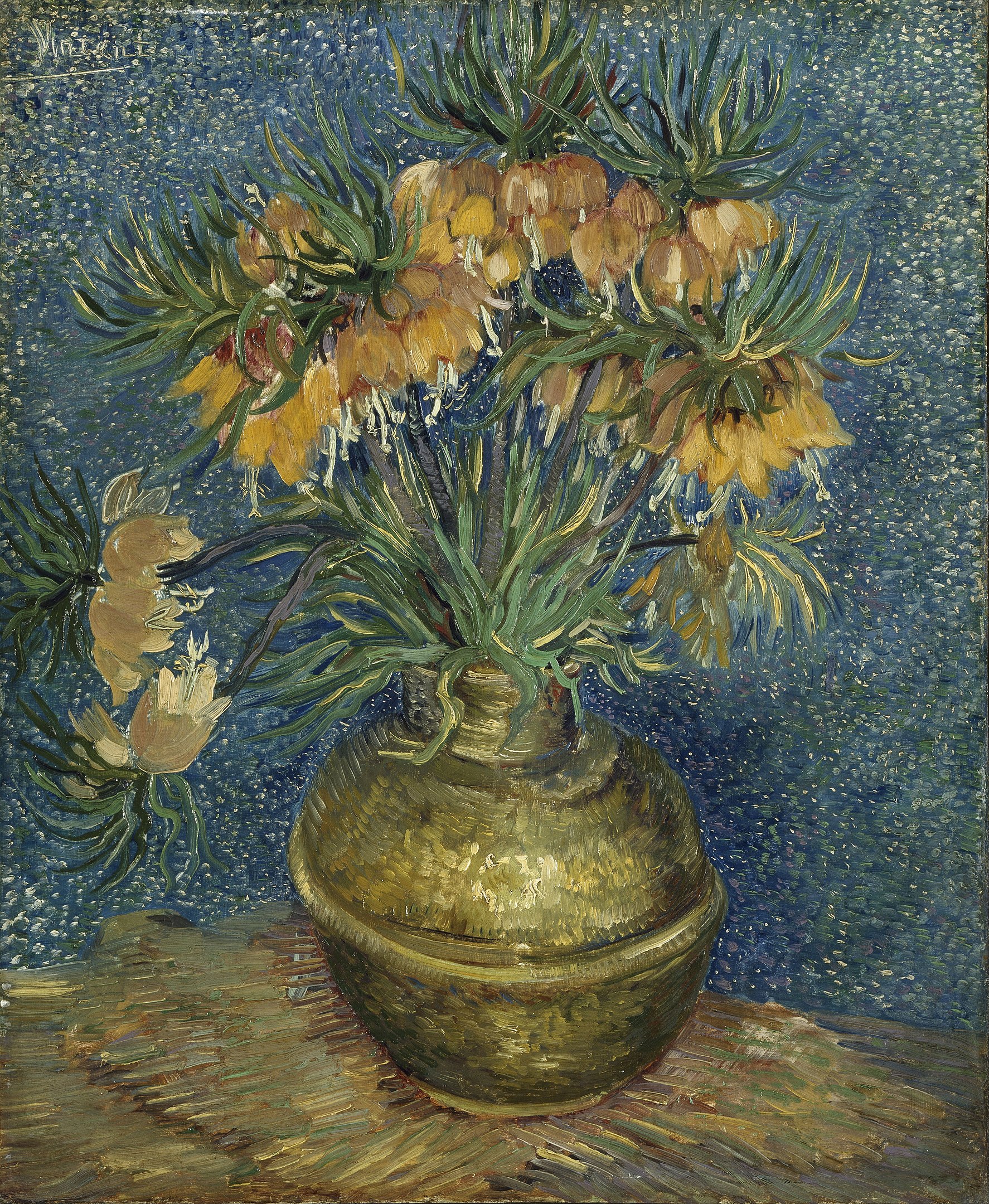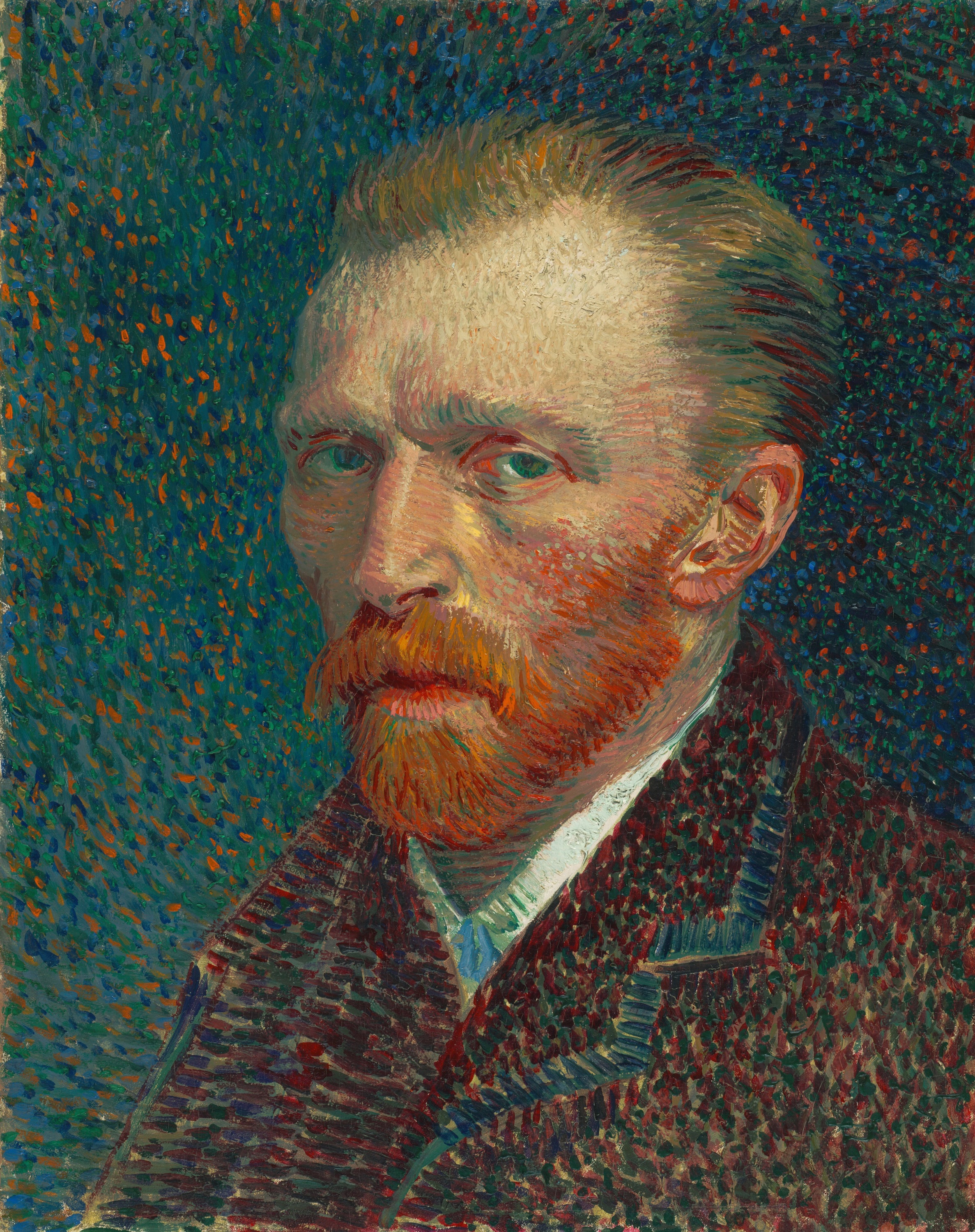Fritillaries are bulbs that, like tulips, flower in spring. Therefore, it is easy to determine what time of year Van Gogh painted this picture. The variety that he represents is the imperial fritillary, which was grown in French and Dutch gardens at the end of the 19th century. It has an orange-red flower with a long stem, each bulb producing between three and ten flowers. So, to compose this bouquet, Vincent used only one or two bulbs, placing the cut flowers in a copper vase.
When he produced this painting, Van Gogh lived in Paris and was in close contact with Paul Signac. It is not surprising, therefore, to note that Van Gogh applied some of the principles of Neo-Impressionist painting, of which Signac was one of the prominent figures: Pointillist brushwork is used for the background, and a contrast of complementary colors, blue and orange, dominates the painting. The influence of these Neo-Impressionist theories, however, remains limited. The separate brushstrokes were used only for a defined surface; the interplay of complementary colors did not limit Van Gogh in his choice of shades in any way, and finally, by choosing a still life, he was moving away from the themes Seurat and his followers treated.
If you love flowers painted by Van Gogh or other artists, please check our Flowers in Art - 50 Postcards Set in our DailyArt Shop!
P.S. Besides self-portraits and landscapes, Vincent van Gogh produced an immense number of floral artworks! Discover Van Gogh's marvelous flower paintings! And for more of Van Gogh's art, see the articles below. :)
P.P.S. Dear DailyArt users! We are looking for volunteers who would like to help us translate or proofread our DailyArts into various languages. Here you can find all the details :)


 Vincent van Gogh
Vincent van Gogh